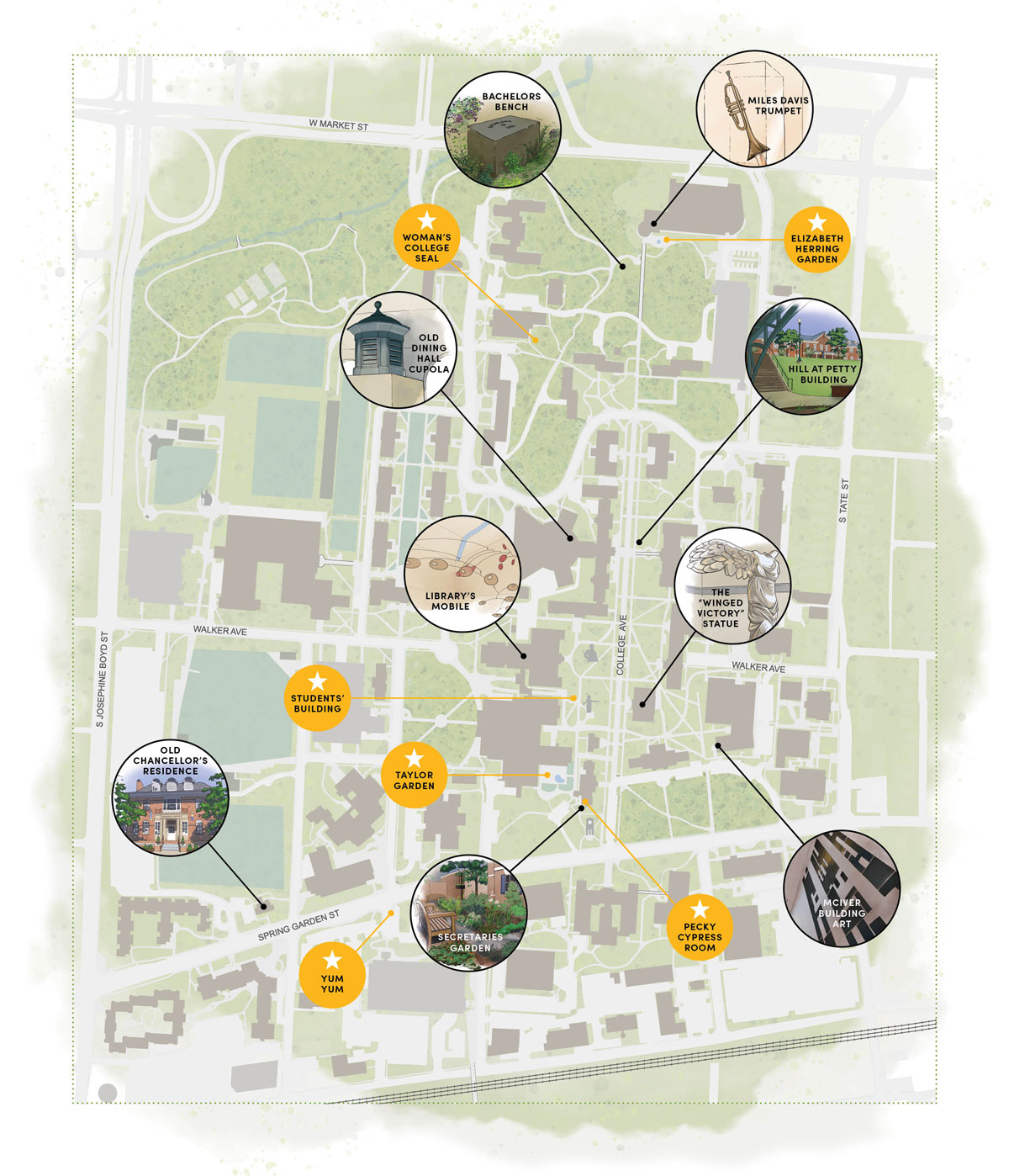SPRING 2023

MAGAZINE
Look at us
Now
UNCG’s LGBTQ+ community is stronger than ever.
Our History Too
As UNCG archives make clear, the LGBTQ+ Community has been here all along.
IN THE UNIVERSITY’S ARCHIVES, you can find memorabilia from Coming Out Day events, fliers from Greensboro’s gay bars, and scrapbooks lovingly kept by students simply documenting their lives.
These items are donated by LGBTQ+ community members, then digitized. The collection also includes recorded interviews that tell a story too often kept hidden.
UNCG librarians Stacey Krim and David Gwynn ’91 archive and share this growing collection, Pride! of the Community. Initially funded by a National Endowment for the Humanities Common Heritage Grant, it documents not only UNCG’s LGBTQ+ history but also that of the Triad region.
“Because they were a historically persecuted group, LGBTQ+ people found it was dangerous to leave a paper trail,” says Krim. They needed to remain invisible and could not rely on mainstream institutions.
Until recently, it was not safe for gays, lesbians, or other queer individuals to “live and love” publicly. Today, members of the community talk about visibility.
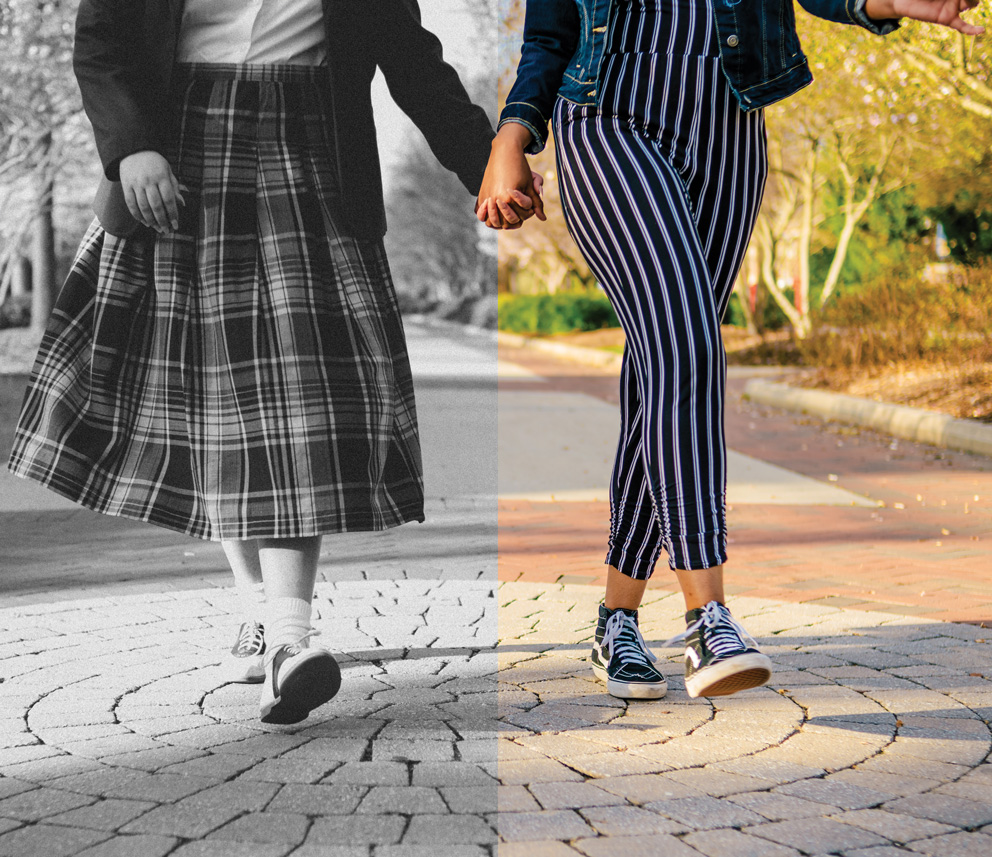
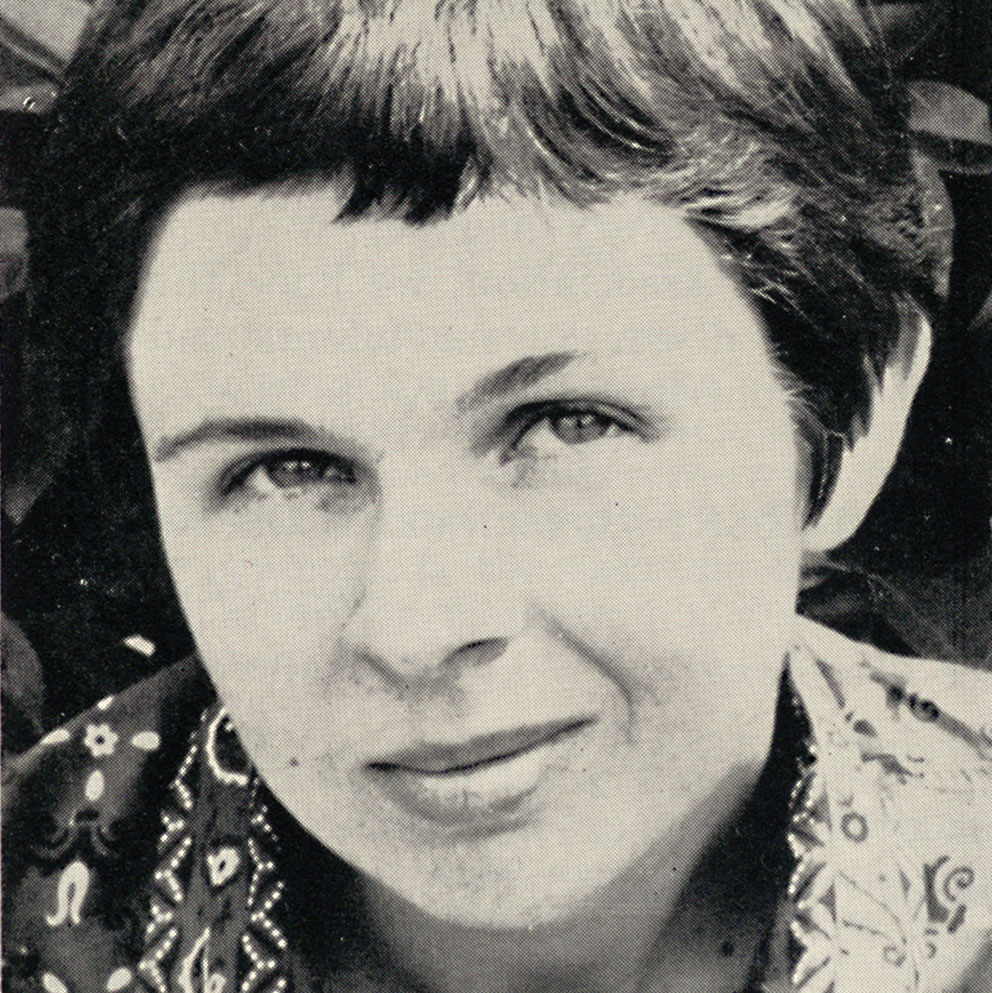
From Newsprint to Novels
BERTHA HARRIS ’59 BA, ’69 MFA was a lesbian feminist writer whose work is stylistically rich, playful, and steeped in both literary history and the Women’s Movement of the 1960s and ’70s.
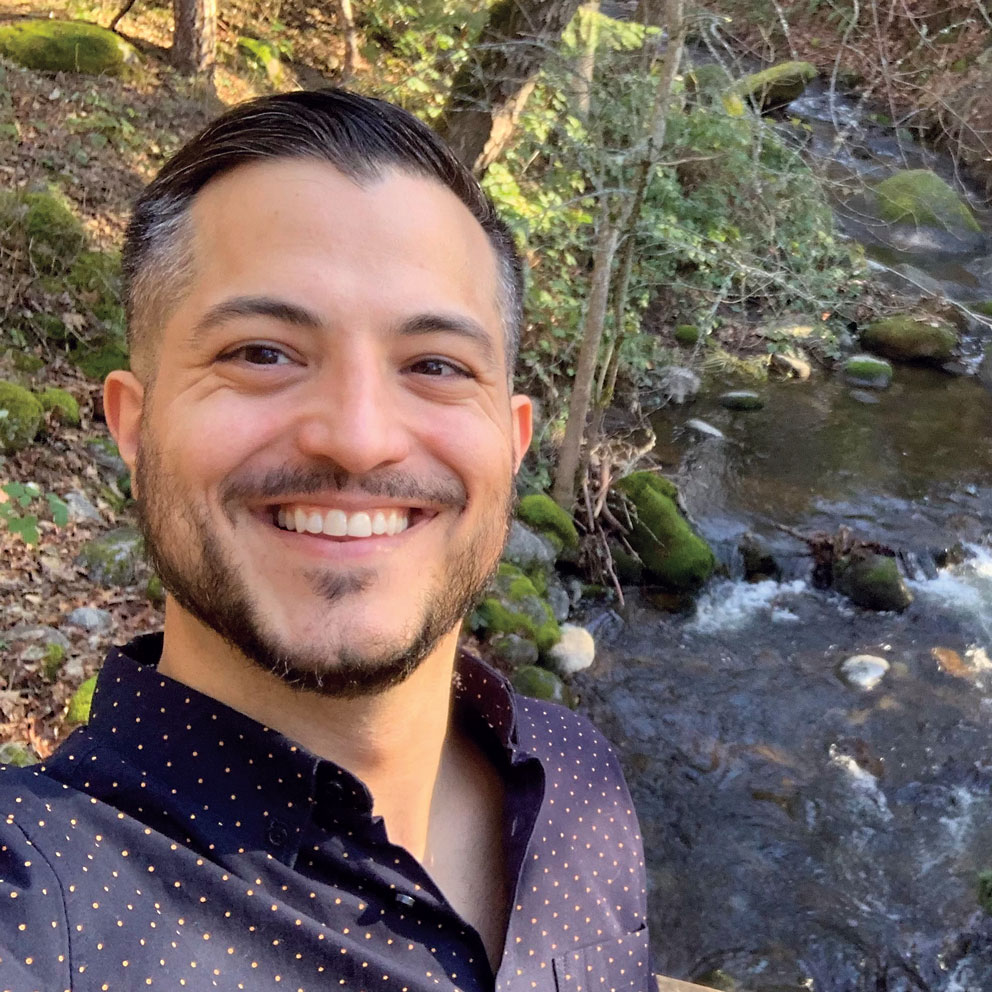
The Accidental Trailblazer
MICHAEL TUSO ’11 was the first in his family to go to college. Although it was the last thing on his mind, he was also the first openly gay student body president at UNCG.

No Labels, Welcoming All
HOW DOES A GROUP CALLED NO LABELS describe its mission? “To provide a safe space for queer people of color, allies, and advocates through volunteerism, advocacy, educational programming, collaboration, and inclusion.”

Hidden Gems Yield Hints of History
Beyond the flowering trees and fragrant wisteria, in the midst of Romanesque, neoclassical, neo-Georgian, and Modernist architecture, treasures abound at UNCG. Everywhere you turn, there’s a reminder of our campus’ storied past. Fact is, our University has a uniquely rich history, which the campus landscape reveals every day. The past is present here, on every path and around every corner.
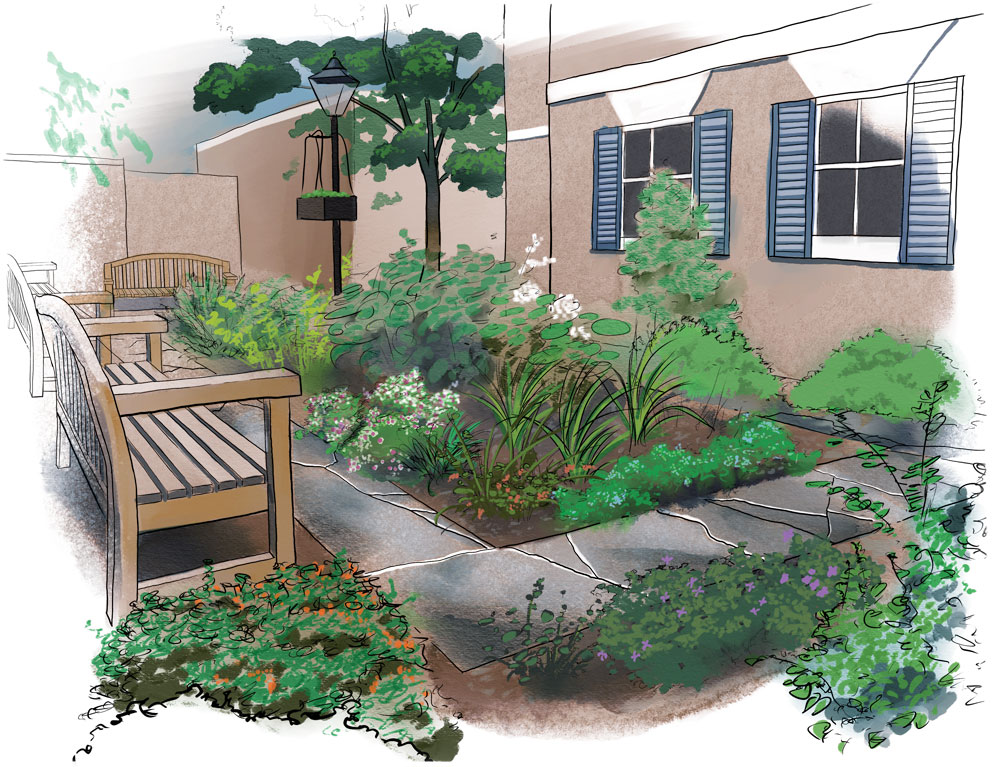
Smell the Flowers
Talk about a secret garden. Bordered by the Alumni House and a retaining wall, this cozy space has been the Alumni Secretaries Garden since 1964. In fact, nearby is a marble bench inscribed “Class of 1964.” A garden wall bears a sign recognizing the first four alumnae leaders: Ethel Bollinger Keiger (1919-1922), Clara Booth Byrd (1922- 1947), Betty Brown Jester (1947-1955), and Barbara Parrish (1955-1989). In 2006, Susan Seeker Jones ’78 revitalized the Secretaries Garden through a gift to the Alumni House Furnishings Fund. Teaming up with then-Landscaping Department Head Chris Fay, she introduced benches and new plantings like irises, flowering bushes, and climbing camellias to the garden, which stands as a living memorial to her parents, Iris and “Bud.” The alumna said, “I never appreciated the garden when I was here. I want to make sure students don’t make the same mistake and take advantage of the many green spaces available.”
But wait, there’s more! Learn more…
Truly
Elite
SWEET 16. ELITE 8. TOP 5 FINAL RANKING. DRAWING ON THE STRENGTH OF A STORIED PAST, MEN’S SOCCER ELEVATES ITS GAME ON AND OFF THE FIELD.
Inspired by past champions,
the Spartans rise.
On a cold November night in Greensboro, two players who weren’t used to the spotlight stepped up and helped advance the Spartans to the next round of the NCAA tournament.
After two overtime periods, a penalty kick shootout would determine the winner. Isaac Briner, who had not played all season, made a save. Freshman Maddox Mallery delivered a clutch kick. UNCG wins!
A crowd of alumni, students, and families roared. Last fall, after more than a decade out of the national spotlight, Men’s Soccer achieved its first Elite 8 finish as a Division I team.
For many alumni and fans, the march through the NCAA reignited memories of the program’s history. Men’s Soccer first earned recognition in the 1980s, when the Spartans won five Division III National Championships under coaches Mike Berticelli (1980-83) and Michael Parker (1984-2009).
“Back in the day, the thing to do in Greensboro was go pick your kids up from school and bring them to the game. It was routine in the 1980s to have 1,500-2,000 people at the game sitting on the hill by the tennis courts watching us,” recalls Steve Harrison ’89.
WHEN YOU’RE PART OF A TEAM, YOU CAN DRAW A LOT OF EXPERIENCE FROM THOSE MOMENTS. IT’S AN INVALUABLE ASSET THAT STUDENT-ATHLETES CAN TAKE AWAY.
—Jason Haupt ’91
Many great alumni players helped build UNCG’s legacy of excellence, including George Hoyle ’90, Andrew Mehalko ’87, Randi Patterson ’10, & Eddie Radwanski ’97.
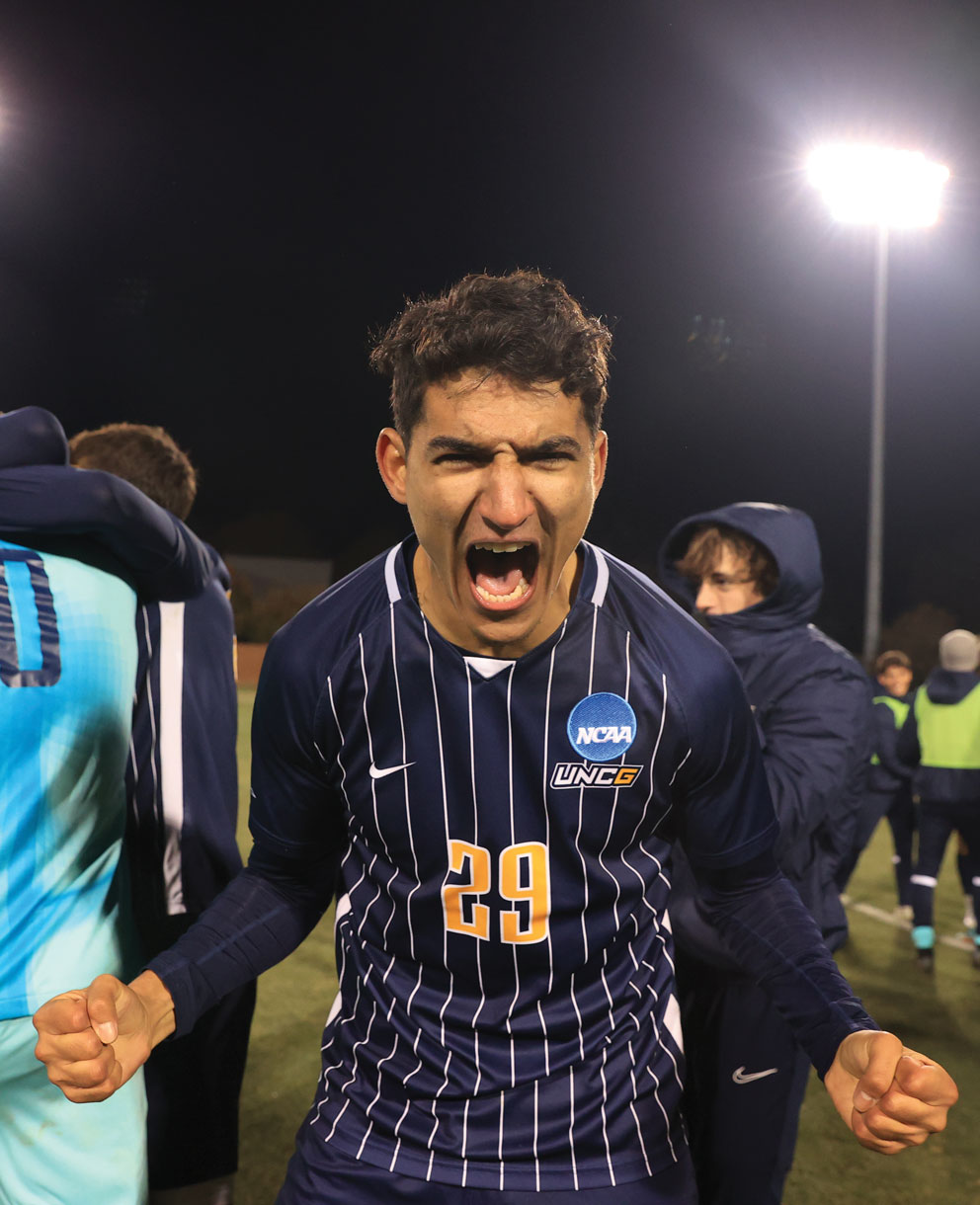
TWO CAPTAINS, TWO JOURNEYS
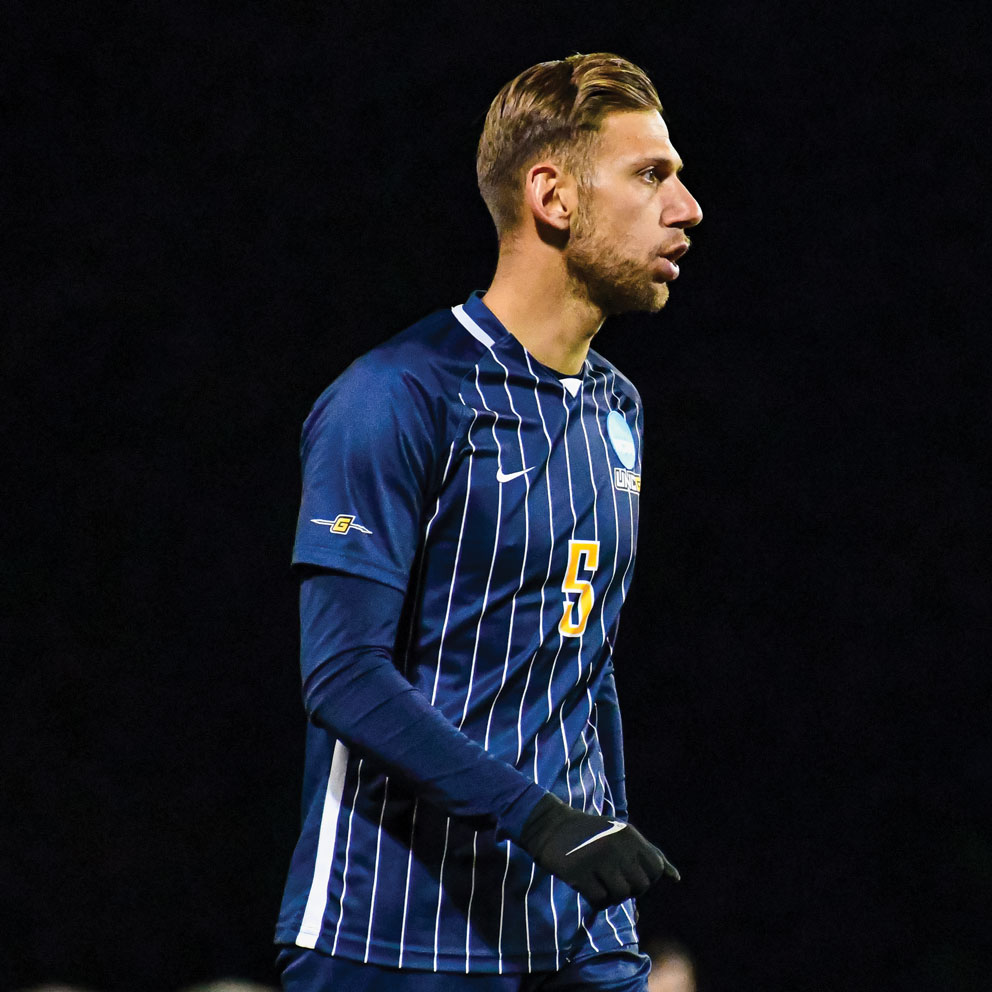
Happy Warrior
“YOU WILL have to be an example, even when you don’t want to be,” explains Marco Milanese ’22. “Being a captain means you’re going to have to expose yourself.”
But being a leader is a role that feels natural for Milanese, who comes from Isenia, Italy, near Naples.
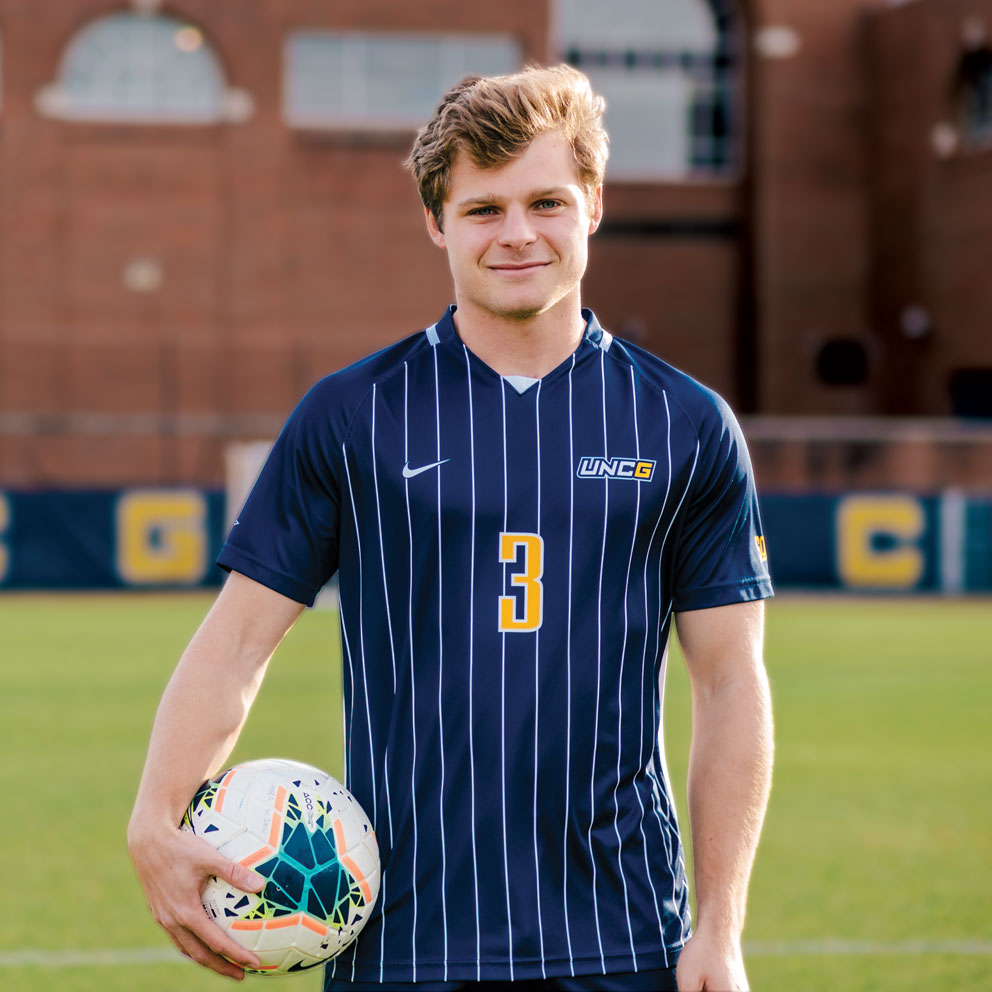
Leading by Example
HE GOT THE CALL that most college athletes would trade anything to receive: He’d been drafted by a pro team. “Man, if I can talk about that moment for a second!
Playing professionally was a dream of mine since I was a kid,” recalls Ethan Conley ’24.
bigpicture
Our campus is welcoming and wonderfully beautiful. Our people, one and all, are amazing. Come be a part of the university experience. Attend the Alumni All Access weekend this month, if you can. Make plans to come to concerts, readings, and lectures in the fall, if you’re within driving distance. I know plans are already in the works for a tremendous Homecoming in October. The UNCG bonfire will be brighter than ever.
And help spread the word about our amazing University. Our University’s reputation for a supportive environment coupled with academic excellence is becoming more pronounced. Our status as the state’s top university for
social mobility is proven. It takes many people to do that. Our alumni are an essential part of that support – helping create scholarships, hiring UNCG interns, speaking to classes – even writing encouraging letters to students, as you’ll see later in this Newsfront section.
With the societal after-effects of the pandemic and changing age demographics, have our nation’s universities ever had a more challenging moment in time? Has there been a better time to be a part of our outstanding University?
The simple truth is: You can make a real difference. Collectively, the alumni of this University can make a profound impact.
Together, we’ll ensure our University thrives like never before!

FRANKLIN D. GILLIAM, JR.
CHANCELLOR
newsfront
-
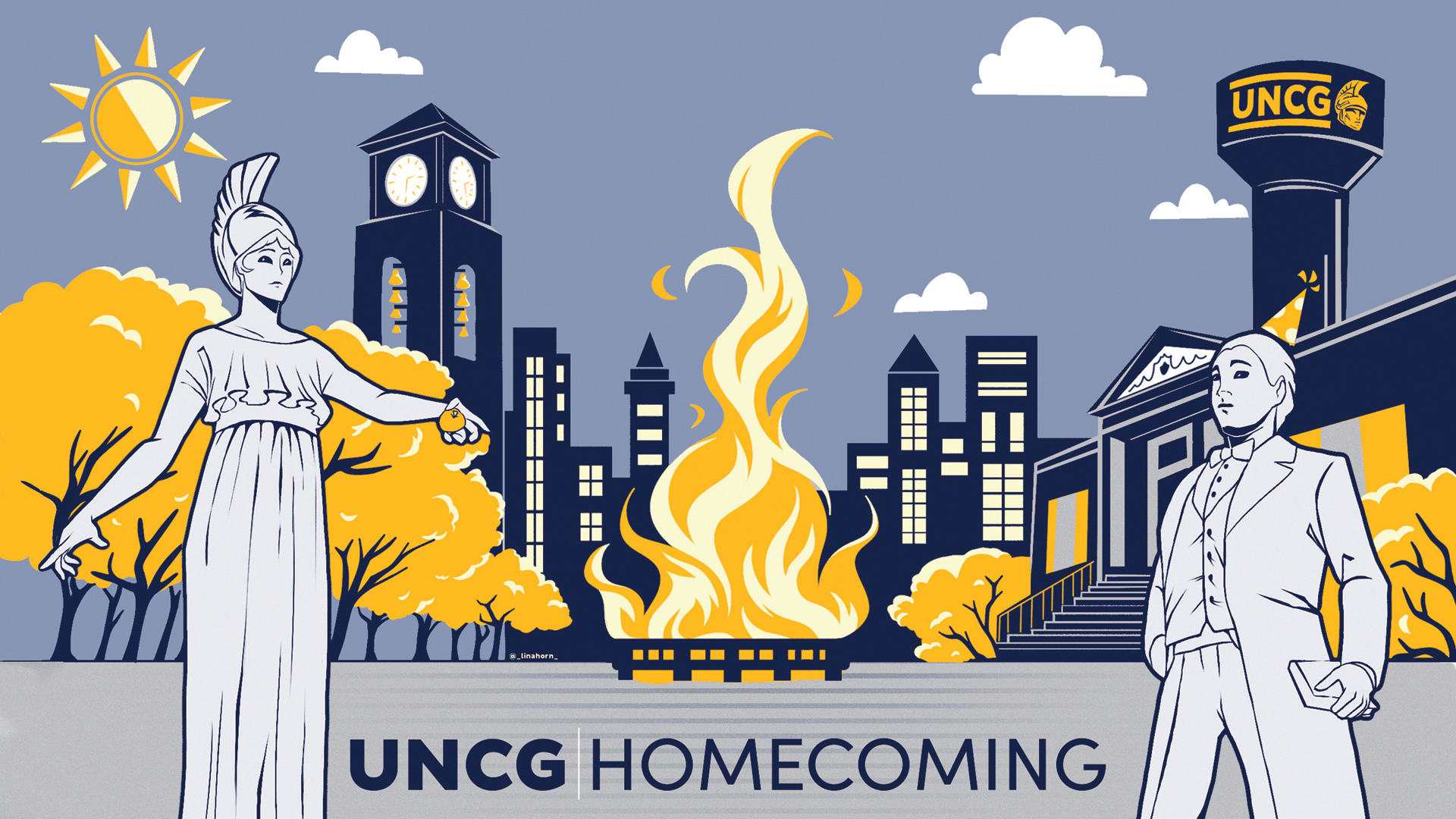
A UNCG Homecoming 2024 preview
The big days will be October 4-5, 2024. Join your fellow Spartans for a celebration featuring beloved traditions in new locations and exciting new events: *We are celebrating on College Ave. this year due to ongoing construction on Kaplan Commons. Visit HOMECOMING. UNCG.EDU for more information about the multi-day Homecoming … Continued
-
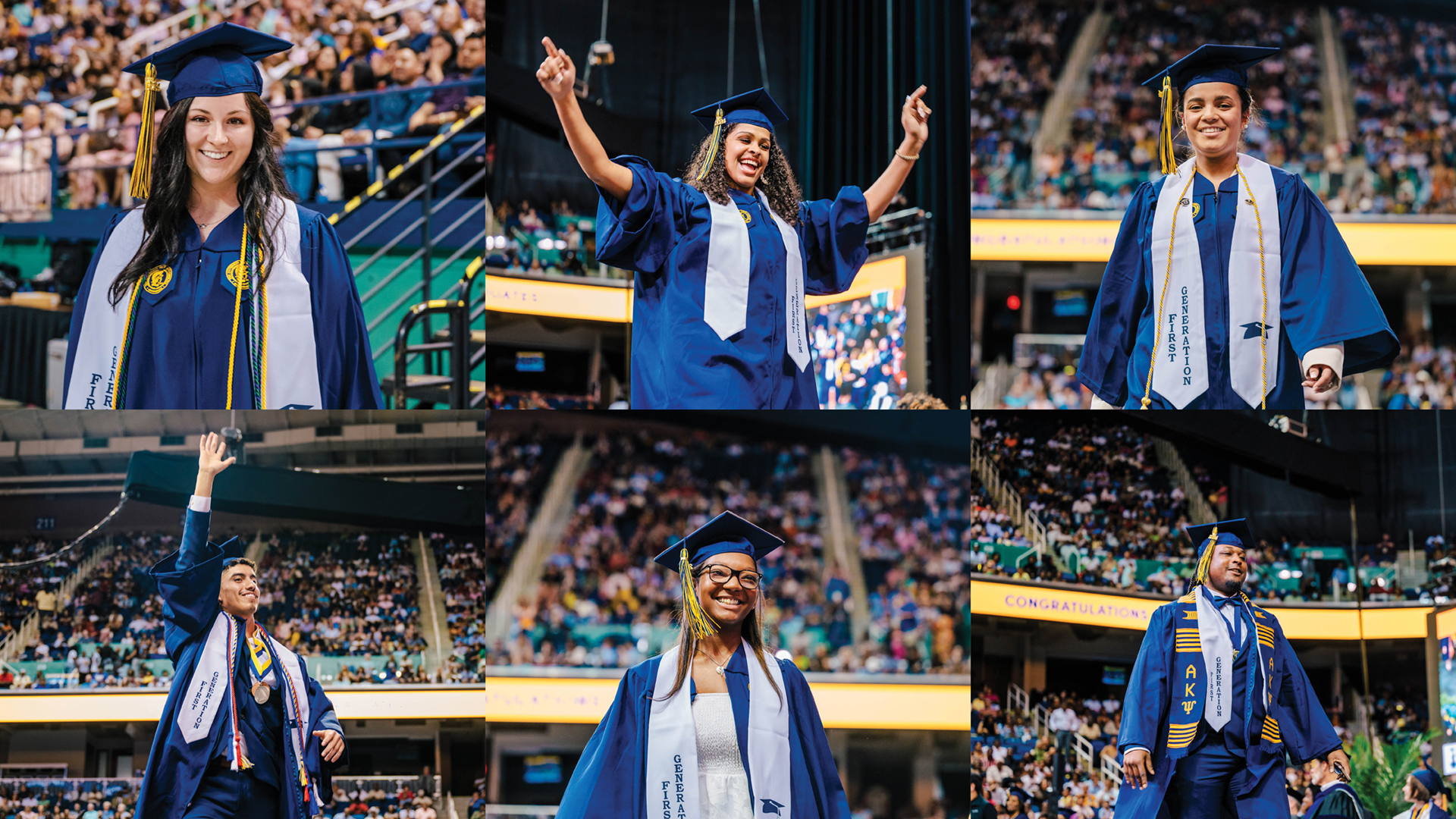
UNCG celebrates first-gen pride
UNCG provides pathways to economic prosperity for all its students, including those who are the first in their families to graduate from college – around 50% of each new class! This year, UNCG launched the First Generation Commencement Stole Project to help those students display their pride at Commencement. As … Continued
-
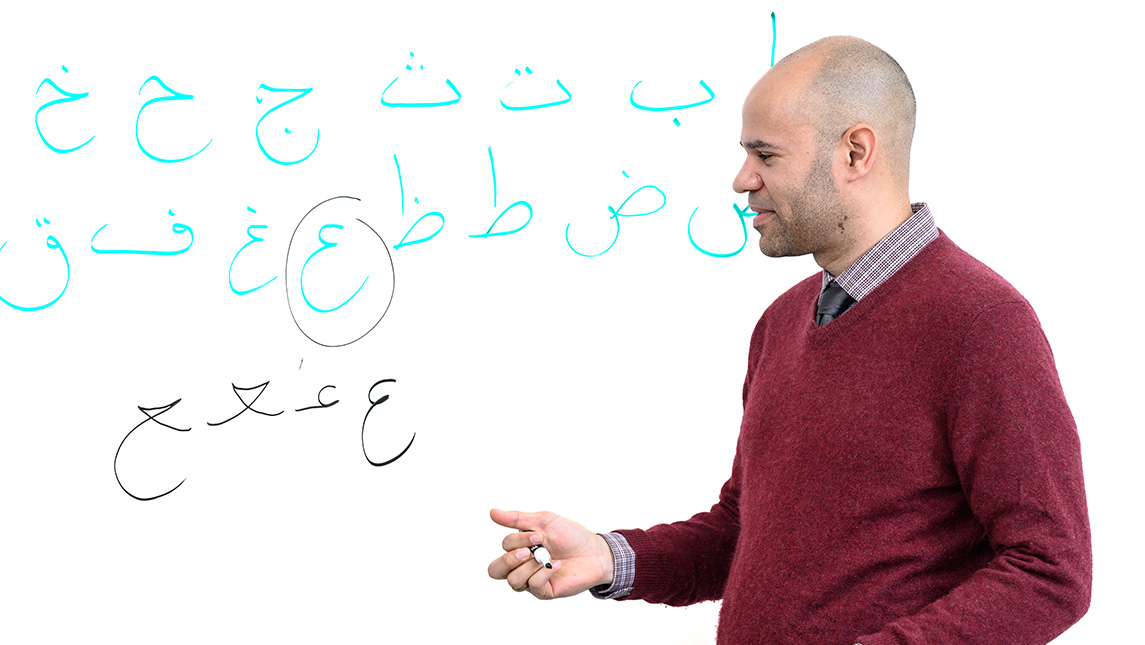
UNCG faculty use AI responsibly
Today, artificial intelligence (AI) software can generate essays and digital art. It also can be used in serious academic research. Many faculty argue that AI technology is here to stay and can be used responsibly. Dr. Chunjiang Zhu teaches artificial intelligence at UNCG and his research has been supported by … Continued
Outtake
PORTRAITS MADE PUBLIC Dr. N. Frank Woods ’78 MFA, a key figure in the development of UNCG’s African American and African Diaspora Studies program, is a scholar of art history. His books include “Race and Racism in Nineteenth Century Art” and “African American Pioneers in Art, Film and Music.” What is less known is that he is an artist. He earned his MFA here at UNCG in studio arts. Over the years he has painted portraits of what he calls his “artist heroes” and, earlier this semester, they were displayed for the first time – in the Weatherspoon Art Museum. Here we see Hale Woodruff, Jacob Lawrence, Lois Mailou Jones, Robert S. Duncanson, and William H. Johnson l-r. To several decades of UNCG students, Dr. Woods himself is an “artist hero,” no doubt about that.
PHOTOGRAPH BY SEAN NARONA ’12
“The artist sees what others only catch a glimpse of.”
—Leonardo da Vinci
thestudio
-
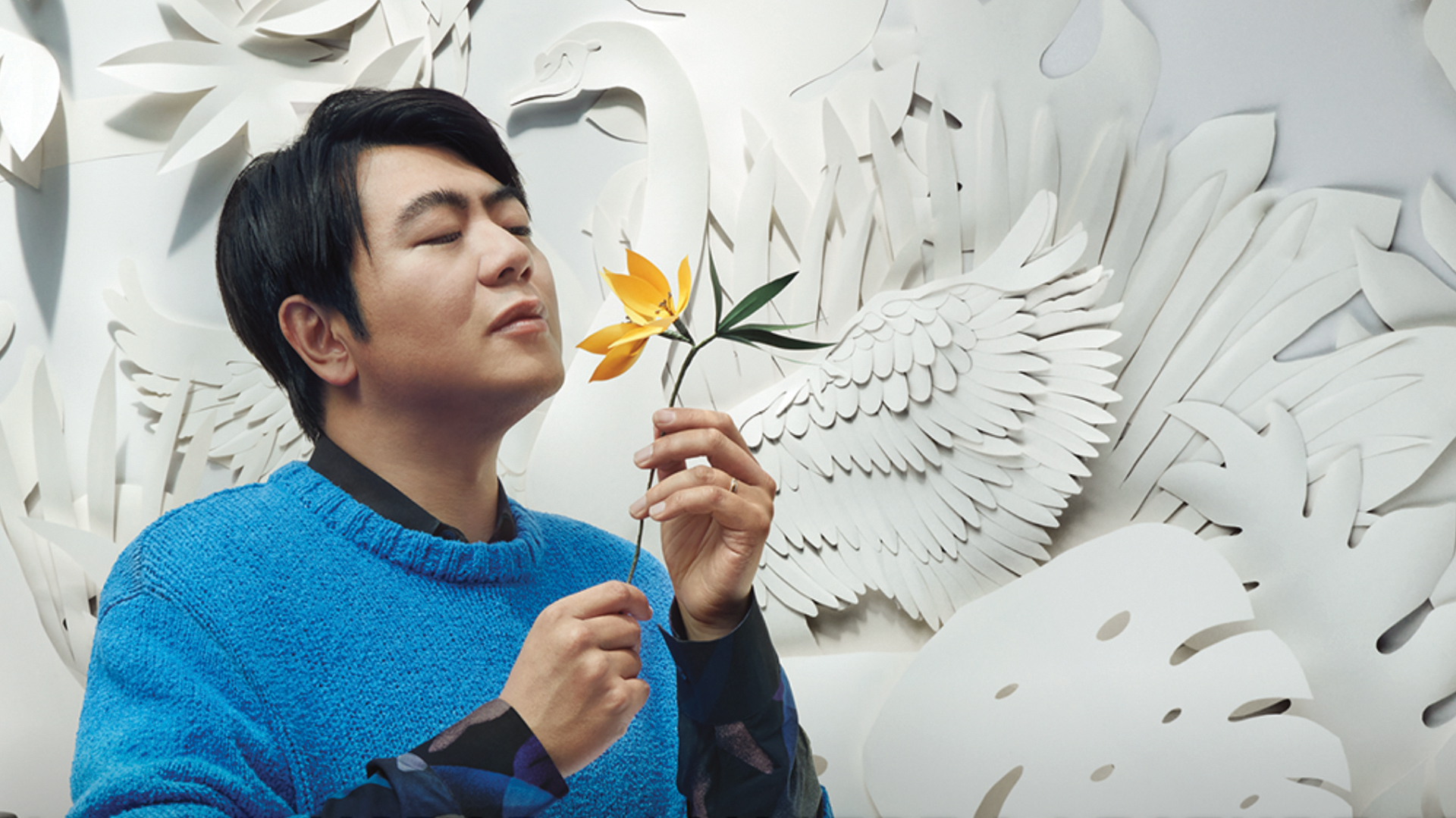
On stage and upcoming, in UNCG’s UCLS
As the UNCG Magazine print issue hits mailboxes, many shows remain in the 2024-25 University Concert and Lecture Series. Sw!ng Out: Caleb Teicher brings swing dance to campus with live big band. A Roomful of Teeth: Two-time Grammy-winning vocal group. Peter Bernstein: The guitarist is an integral part of NY … Continued
-
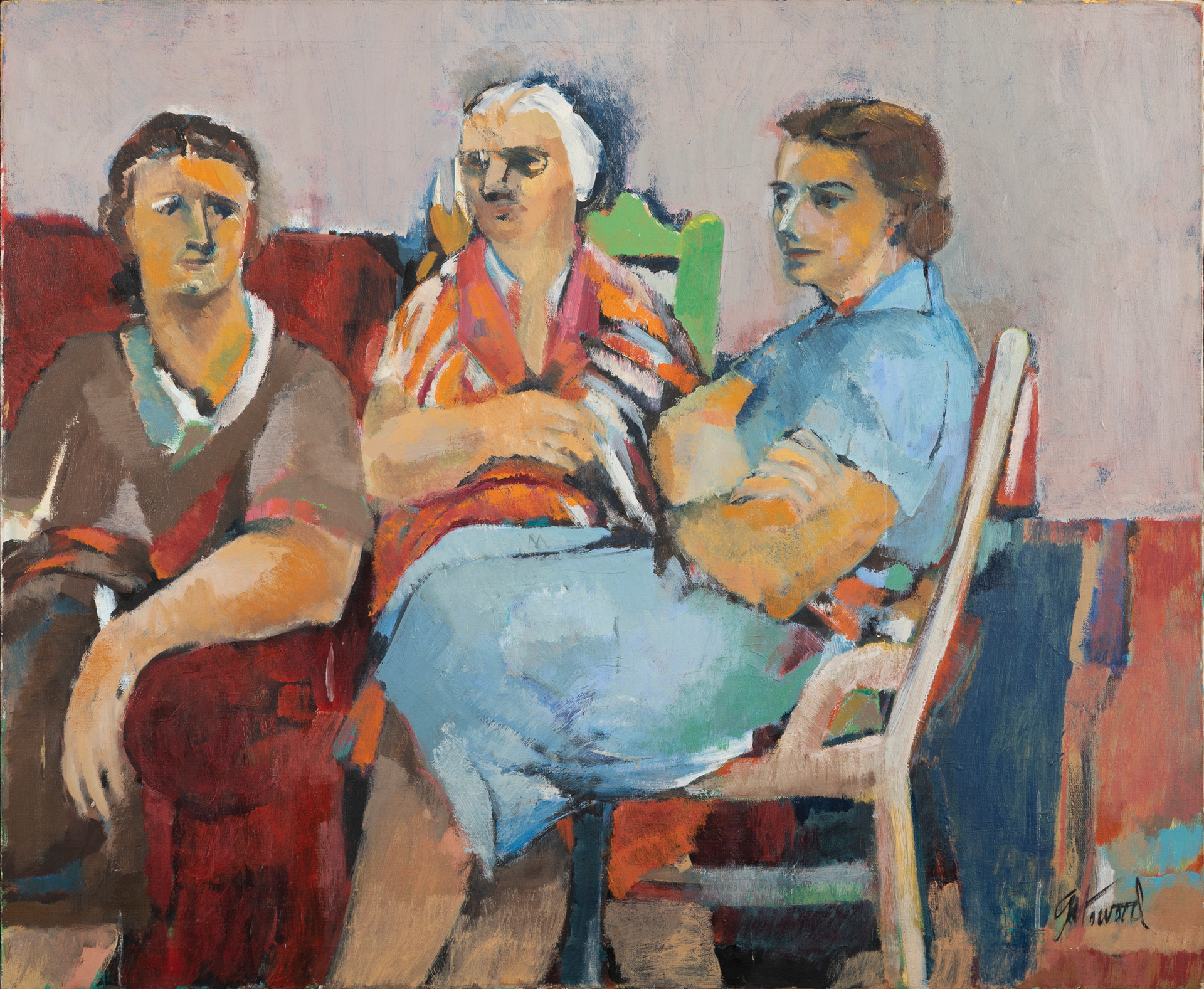
UNCG’s Maud Gatewood at her peak
Maud Gatewood ’54 was one of the most significant 20th century painters to work in North Carolina. Her years studying art at Woman’s College were highly influential on her career. “I thought it was a good art department. It was progressive and very open to new ideas,” she once said. … Continued
-
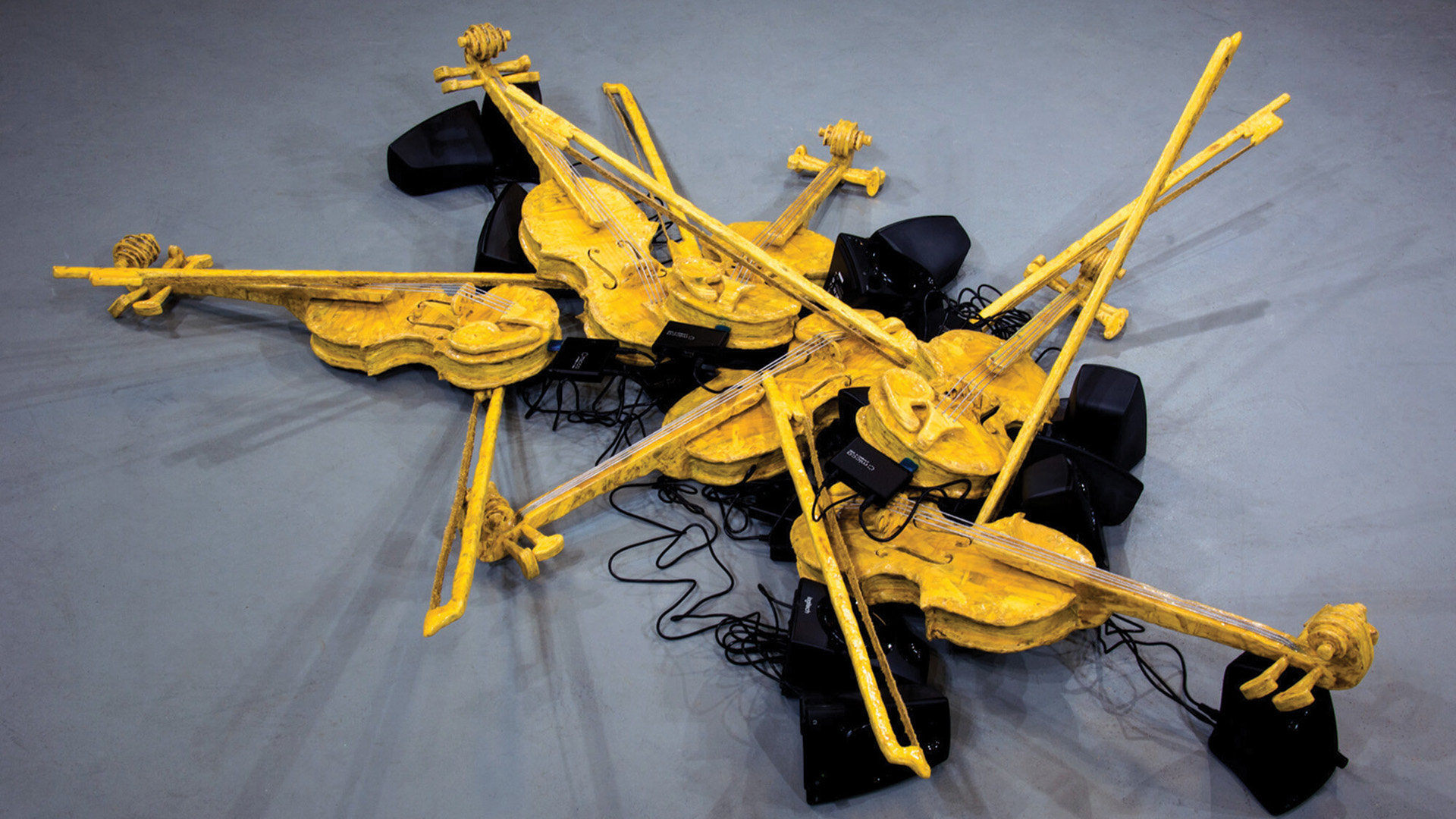
At Weatherspoon, artists engage with disability
The year’s most anticipated Weatherspoon Art Museum exhibition presents contemporary artists engaging with experiences and understandings of disability. Some artists in the exhibition “Crip” identify as disabled and some do not, but each has a relationship to at least one identity that is not perceived as normal. Too often, organizers … Continued
